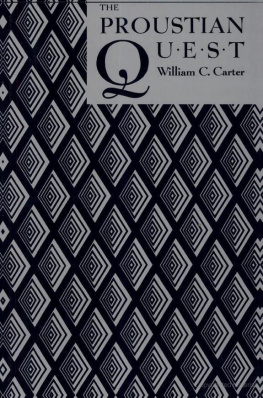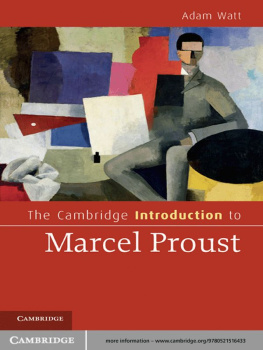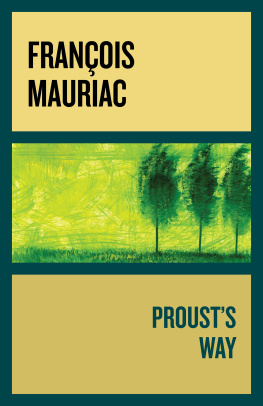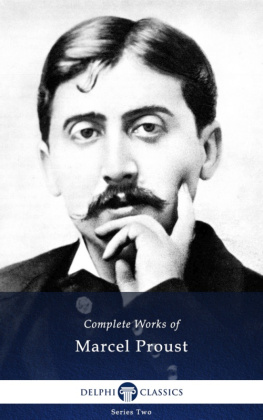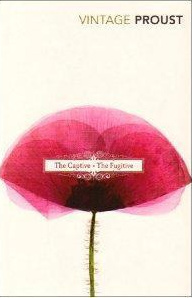The Proustian Quest
The Proustian Quest
William C. Carter

NEW YORK UNIVERSITY PRESS
New York and London
Copyright 1992 by New York University
All rights reserved
Library of Congress Cataloging-in-Publication Data
Carter, William C., 1941
The Proustian quest / by William C. Carter.p. cm.Includes bibliographical references and index.ISBN 0-8147-1470-61. Proust, Marcel, 18711922, A la recherche du temps perdu.
2. Social change in literature. 3. Speed in literature. I. Tide.
PQ2631.R63A7827 1992
843.912dc20 92-3037
CIP
New York University Press books are printed on acid-free paper, and their binding materials are chosen for strength and durability.
Manufactured in the United States of America
c 10 9 8 7 6 5 4 3 2 1
To the memory of my mother,
SARAH CAUSEY CARTER,
who first read to me and taught me to love books.
Que voulez-vous, mon cher,
Anaxagore la dit, la vie est un voyage.
Marcel Proust, La Prisonnire
Contents
Illustrations
.
Acknowledgments
I would like to express my sincere thanks to the University of Alabama at Birmingham for supporting this project through a sabbatical leave and a Graduate School Research Grant which allowed me to undertake the work that resulted in this book.
I am grateful to Tinker B. Dunbar, of the Reference Department of Mervyn H. Sterne Library at the University of Alabama at Birmingham, for her skill in locating and obtaining rare books and other documents; to Richard Bleiler, Humanities Librarian, for his efforts in maintaining and strengthening our Proust holdings, now the third largest in the world. I am also indebted to Florence Callu, head of the manuscript department at the Bibliothque Nationale and cataloguer of the Prousts manuscripts, who, on many occasions graciously provided important assistance. The illustrations that grace this book are reproduced through the generosity of the Association des Amis de Jacques-Henri Lartigue, the Collge de France, the Philadelphia Museum of Art, Stanford University Archives, and Mme Odile Gvaudanall of whom I thank.
Friends who have aided and encouraged me along the way include Robert E. Bowden, E. Culpepper Clark, Marie-Colette Lefort, and Clay Nordan. I am especially grateful to my wife, Lynn, for her constant support and invaluable editorial suggestions. To my children, Josephine, Sarah, and Susanna, for their patience and wonderful distractions.
I would also like to thank my editor, Jason Renker, and the editorial staff at New York University Press for their faith in this project, and Henry Krawitz for his excellent copy-editing.
W.C.C.
CHAPTER
The Age of Speed
Le monde a mains chang depuis Jsus-Christ quil na chang depuis trente ans.
Charles Pguy, LArgent (1913)
Marcel Proust lived from 1871 until 1922, an epoch that he himself characterized as the age of locomotion and speed because of the conquest of land and air.
Electric lighting, plumbing, more leisure time, and new ways of heating significantly enhanced the standard of living, Communication and entertainment industries made extraordinary progress thanks to the invention of movable type, the telegraph, the telephone, the phonograph, and the movie projector. Three key words that define the tenor of this period are machine, modern, and speed.
The sports daily lAuto-Vlo, which would become the leading newspaper in its field, carried this comment in its first issue on October 16, 1900: Nous vivons mieux et nous vivons plus vite quautrefois. However, such dramatic changes did not extend immediately to all classes of society; many French citizens still lived under conditions that had not changed significantly since medieval times. Proust and his friends belonged to a class that could instantly enjoy the benefits of the new age. One of his acquaintances was due Armand de Guiche, a pioneer in aerodynamics who stimulated Prousts interest in aviation well before Alfred Agostinelli, the novelists handsome Italian chauffeur, began to study flying. Machines such as the automobile and the airplane, at first the exclusive domain of wealthy sportsmen, were taken up quickly by the middle class since the practical applications were obvious and mass production soon resulted in lowered prices.
The age of cheap mass transport had arrived, bringing with it easy access to various types of leisure, including sports facilities and vacation spots that had previously been the reserve of the wealthy. Now families of modest means could take a Sunday outing, while those of the middle class could go on extended holidays. In 1900, the first Michelin Guidesthose indispensable green-colored travel books whose appearance ushered in the age of tourismrolled off the presses. The Grand-Htel at Cabourg and others like it were built at the turn of the century to meet the needs of the nouveaux riches vacationers who were arriving in large numbers by train. After the disappointing failure of Les Plaisirs et les jours in 1896, Proust resolved to address himself in his next work to this new class, which read inexpensive novels on the train. It would take the novelist more than a decade to find the unique structure of the book he had always wanted to write and to discover his individual voice as a mature artist.
The grand hotels that sprang up to accommodate the new generation of travelers were illuminated by another modern wonderelectric lighting. In fact, the nineteenth century has been called the age of the conquest of darkness. Paris became the City of Light.
Photographs and stock footage from films made around 1900 show Paris streets bustling with an incredible variety of pedestrians, ambulatory vendors, drivers and their horses, and a number of the new, self-propelling automobiles. Automobile production in France increased at an astonishing rate, from two hundred in 1894 to fourteen thousand by 1905. By the year Du ct de chez Swann was published (1913), there were ninety-five thousand cars in France. In 1925, three years after Prousts death, the figure was close to three-quarters of a million. As the number of cars increased on Paris streets, one could see a way of life vanishing before ones eyes. The cries of Prousts beloved street vendors would soon be smothered by the roar of traffic. At the end of Du ct de chez Swann, the Narrator, trying to recover the ambience of the olden days when he used to go to the Bois de Boulogne to watch Mme Swann passing by, discovers instead how rapidly time is fleeting as Paris enters the twentieth century: Hlas! il ny avait plus que des automobiles conduites par des mcaniciens moustachus... (I, 425).
Beneath Pariss ancient cobblestoned streets, a new way of transporting urban masses was being created. The year 1900 saw the inauguration of the Paris Chemin de fer mtropolitain, still considered by many to be the best in the world. The mtro was extremely successful; in less than a decade, as fares were reduced, the number of subway travelers grew dramatically from 15 million in 1900 to 312 million in 1909. One of the major effects of mass transit was a leveling of social distinctions; people from all social classes were brought together within the physical confines of a public conveyance. The Vicomte dAvenel, a contemporary observer of the rapidly changing social scene, rejoiced in 1905, Today duchesses and millionaires rub shoulders with cooks and clerks.
In la Recherche, this leveling effect, the new democracy of public transport, is resisted vehemently by Dr. Cottard. The worthy doctor, in his capacity as medical officer for the railway company, has a farm laborer he considers to be riffraff ejected from the little train at Balbec because the man dared enter the car reserved for the members of the little clan en route to the Verdurins summer villa at la Raspelire (II, 875). The physician, awed by anyone with a title, fears that the mans presence might contaminate the atmosphere for the putative Russian princess Sherbatoff. On the other hand, the baron Charlus, the haughtiest of aristocrats and the most sexually driven character in the novel, uses public transportation for a leveling effect of a different kind: he pursues drunken coach drivers and handsome young conductors in hopes of seducing them.
Next page
